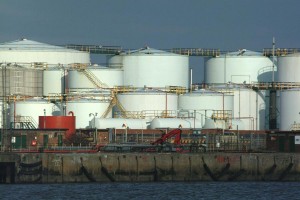The most recent first-half 2016 refinery outage report released in March by the Energy Information Administration (EIA) examines U.S. refinery outages planned for the first half of 2016 and the implications for available refinery production capacity, petroleum product markets, and the supply of gasoline, diesel, fuel and jet fuel.
Within this context, refinery outages result from the planned shutdown of refinery units for maintenance and upgrades, and from unplanned shutdowns from a variety of causes such as mechanical failure, bad weather, power failures, fire and flooding. Planned maintenance is typically scheduled when refined petroleum product consumption is relatively low.
The EIA found that refinery maintenance is not expected to affect adversely the supply of gasoline, jet fuel, and distillate fuel in the U.S. in the first half of 2016. The effect of planned refinery outages on product supplies depends on many factors, including the magnitude and duration of the outage, petroleum product demand, the availability of product supplies from other available refinery capacity and imports, and product inventories. Barring unusually high unplanned outages, planned outages that extend beyond the planned period, or higher-than-expected demand, the supply of gasoline, jet fuel, and distillate fuel should be adequate in all regions during the first half of 2016.
As in previous EIA analyses of refinery outages, the latest report considers the supply of petroleum products on regional (both Petroleum Administration for Defense District [PADD] and sub-PADD) levels, rather than at a national level. According to EIA, national balances have very limited meaning for the adequacy of supply because pipeline infrastructure, geography, and marine shipping regulations constrain the amount of product that can flow among the different regions of the U.S.
The report considers planned shutdowns of refinery units as reported by Industrial Info Resources (IIR) and provides EIA’s analysis of the implications of outages affecting atmospheric crude distillation units (ACDUs), fluidized catalytic cracking units (FCCUs) , catalytic reforming units (CUs), hydrocracking units (HUs) and coking units (CUs).
PADD 1 has very little planned maintenance for ACDUs, FCCUs, and CRUs in the first half of 2016. The planned outages will result in estimated production loss in gasoline of 31,000 bpd and 27,000 bpd in March and April, respectively, and production loss in distillate fuel of 12,000 bpd and 14,000 bpd in March and April, respectively. Production losses in other months during the first half of 2016 are negligible. The total estimated production loss induced by the expected outages accounts for only 2.9% of existing gasoline inventory, 1.0% of jet fuel inventory, and 1.2% of distillate inventory. Therefore, the production loss in PADD 1 could be covered by existing product inventory.
Planned maintenance in PADD 2 is concentrated from March to May, with outage rates of crude distillation and reforming capacities close to the 10-year maximum. The high planned outages of reforming capacity could cause tightness for octane. Outage rates of HUs will be higher than the 10-year maximum in May and June. Planned maintenance of FCCUs will be above the 10-year maximum in February, a low-gasoline-demand month, and remain near the 10-year average between March and June. The outages will result in moderate production loss of petroleum products from February to June. The highest losses occurred in February, consisting of 132,000 bpd in gasoline, 53,000 bpd in jet fuel, and 60,000 bpd in distillate fuel. The total estimated production losses in gasoline, jet fuel, and distillate fuel account for 29%, 94%, and 25% of existing inventories as of January 8, which indicate that current inventories must be supplemented by supplies from other regions, such as the Gulf Coast, to offset lost production from the planned outages.
Planned maintenance in PADD 3 of CRUs, HUs, and CUs is intermittently above or close to the 10-year maximum, while planned maintenance for other units is near or below the 10-year average. The outages will result in moderate production loss in petroleum products. From February to April, the expected average losses are 303,000 bpd in gasoline, 28,000 bpd in jet fuel, and 113,000 bpd in distillate fuel. Gulf Coast inventories are all near or above the 10-year maximum at the beginning of 2016. The total estimated production loss as a result of the planned outages accounts for 33% of existing gasoline inventory, 18% of jet fuel inventory, and 21% of existing distillate inventory. As a result, there may be a need to divert some exports from the U.S. Gulf Coast to domestic markets to offset lost production from the planned outages.
Planned outages in PADD 4 are moderate and concentrated in the period from February to April. Total estimated production losses from planned outages account for 34% of gasoline inventory, 71% of jet fuel inventory, and 35% of distillate inventory. The inventory levels for those products were all close to the 10-year maximum as of late January, however, continued supply from other regions will be required to offset lost production from the planned outages.
In PADD 5, between February and June, planned outages will be higher than the 10-year average for coking units, and generally near or below the 10-year average in ACDUs, FCCUs, CRUs and Hus. Given the significant and persistent unplanned FCCU outage at the ExxonMobil Torrance refinery, the total estimated production loss is concentrated in gasoline. From February through June, average production loss of gasoline is 131,000 bpd, and the average losses in jet fuel and distillate fuel are 27,000 bpd and 20,000 bpd, respectively. The estimated reduction of petroleum products induced by the outages accounts for 66% of the existing gasoline inventory, 47% of jet fuel inventory, and 20% of distillate fuel inventory. Therefore, continued imports of gasoline and jet fuel into the West Coast will be required to provide adequate supplies.








Leave a Reply
You must be logged in to post a comment.